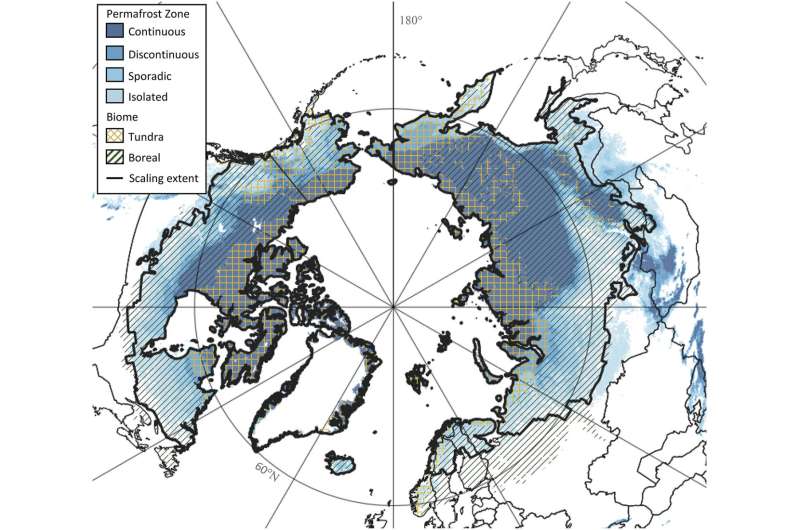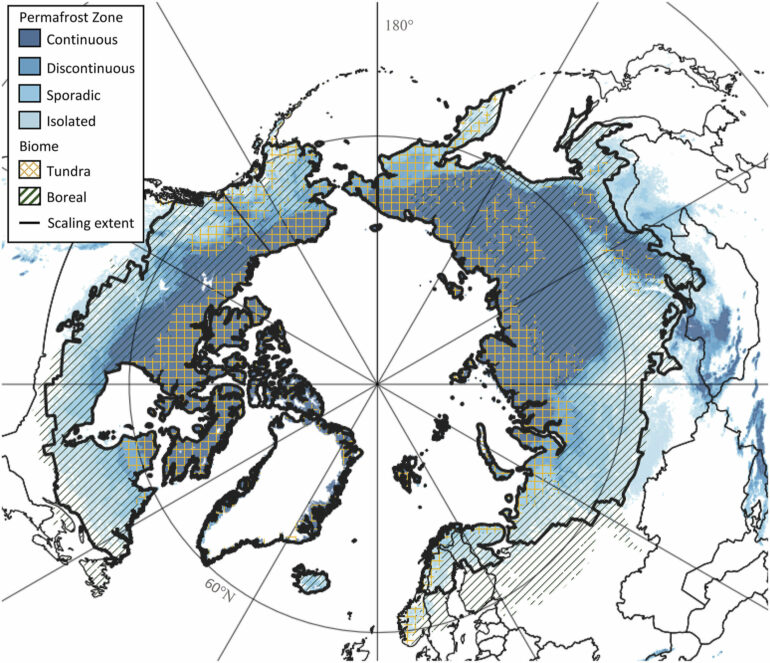Boreal forests and Arctic tundra are underlain by millions of square kilometers of permafrost, and scientists are still unsure of how the thawing of this long-frozen soil will affect the climate. Soils and vegetation in the region have historically held large stocks of carbon and nitrogen, both of which are components of greenhouse gases. As the ground thaws, an as-yet-undetermined portion of these elements will return to the atmosphere as greenhouse gases.
Hugelius and team collated and compared a large collection of datasets that analyzed the region’s current emissions in two ways: based on measured fluxes of carbon and nitrogen from soil and vegetation (a “bottom-up” approach) and based on atmospheric measurements of greenhouse gases (a “top-down” approach).
Calculations using data from both methods indicate that the northern permafrost region will be a source of greenhouse gases over the next 20 years, but be approximately greenhouse gas neutral over the next 100 years. The difference between time horizons depends on the balance between carbon dioxide (CO2), which stays in the atmosphere over a very long time, and methane, which is a potent but short-lived greenhouse gas.
Nitrous oxide emissions were found to be relatively small. The datasets generated by both methods yielded widely ranging estimates of just how much of the different gases the region emits, highlighting the need for further study.
The study is published in the journal Global Biogeochemical Cycles.

Map of the extent of the study area, defined as the northern permafrost region (blue shades, data from Obu, 2021) overlaps with the spatial extent of the Tundra and Boreal Forest biomes (hatched areas) as represented Boreal Arctic Wetlands and Lakes Data set (BAWLD, Olefeldt et al., 2021). © Global Biogeochemical Cycles (2024). DOI: 10.1029/2023GB007969
Bottom-up estimates for CO2 are particularly uncertain, but they suggest that the far north emits CO2 via sources such as wildfires and rivers at close to the same rate that it takes up the gas, mostly through boreal forests and wetlands. Methane dynamics are also uncertain, but the work suggests that each year, the region releases about 38 teragrams of carbon as methane (mainly from wetlands and inland waters).
The top-down approach was more optimistic, suggesting that each year the northern permafrost region takes up 312–862 more teragrams of carbon per year as CO2 than it releases. However, this analysis also showed that the region is a net source of methane, annually releasing around 15 more teragrams of carbon as methane per year than it takes up.
The far north holds more than twice as much carbon as is found in the atmosphere today, so thawing permafrost could drastically affect climate. But the region’s remoteness and complex terrain make it difficult to work in, leading to uncertainty like that described by the researchers.
More information:
G. Hugelius et al, Permafrost Region Greenhouse Gas Budgets Suggest a Weak CO2 Sink and CH4 and N2O Sources, But Magnitudes Differ Between Top‐Down and Bottom‐Up Methods, Global Biogeochemical Cycles (2024). DOI: 10.1029/2023GB007969
This story is republished courtesy of Eos, hosted by the American Geophysical Union. Read the original story here.
Citation:
Thawing permafrost is affecting climate, but it’s unclear by how much (2024, October 29)



